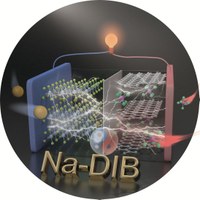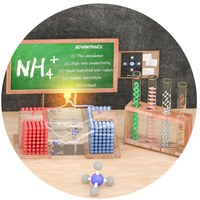Projet de recherche doctoral
 Runtian Zheng
Runtian Zheng
PhD student (CSC)
runtian.zheng@unamur.be
Lithium ion batteries (LIBs) have gained tremendous success and become the most common rechargeable battery. Benefiting from their merits of high energy density, cycle life, and energy efficiency, LIBs have been widely applied in portable electronic devices and electric vehicles. However, as for large-scale energy storage systems, especially for stationary application, the state-of-art LIBs are still confronted with challenges in safety issues primarily derived from volatile and flammable organic electrolytes. The main reason is that organic electrolyte would react with anode or decompose, which can cause thermal runaway, fire and even explosion under abuse conditions.
In contrast, as for aqueous rechargeable batteries (ARBs), the easy battery manufacturing and cheap raw materials reduce the overall cost of battery. Compared with organic electrolyte, aqueous rechargeable batteries can provide a safer alternative for reliable, low-cost, and large-scale energy storage systems. Furthermore, the ionic conductivity of aqueous electrolyte is several orders of magnitude higher than organic electrolyte. Benefiting from the solid foundation of LIBs, the first aqueous lithium ion batteries was researched by Dahn’s group with a LiMn2O4 cathode, VO2 anode, and 5 M LiNO3 electrolyte in 1994. Up to now, a serious of aqueous rechargeable ion batteries (Na+, K+, Mg2+, Al3+, Ca2+, Zn2+ etc.) and nonmetal ions (H+, NH4+ etc.) are investigated as attractive charge carriers. Specifically, non-metal ammonium ion (NH4+) have attracted increasing attention because of the prospect of unparalleled safety, battery manufacturing, environment friendly, low cost, long cycle life and fast diffusion kinetics.
The interesting electrochemical performance of NH4+ was demonstrated for the first time by Toshima et al. in 1982. The cyclic voltammogram of the Prussian blue electrode showed a super stable redox peak, indicating viability and stability of NH4+ insertion. Subsequently, Scholz's group explored the method to determine NH4+ in aqueous solutions. Afterward, Yegnaraman et al. modified Prussian blue electrode with cetyltrimethylammonium bromide (CTAB) to promote the transport of NH4+. Later, Cui et al. reported more details on the electrochemical behavior of Prussian blue analogs (PBAs) for NH4+ storage. More recently, a series of host materials and corresponding electrolytes in AIBs have been explored.












